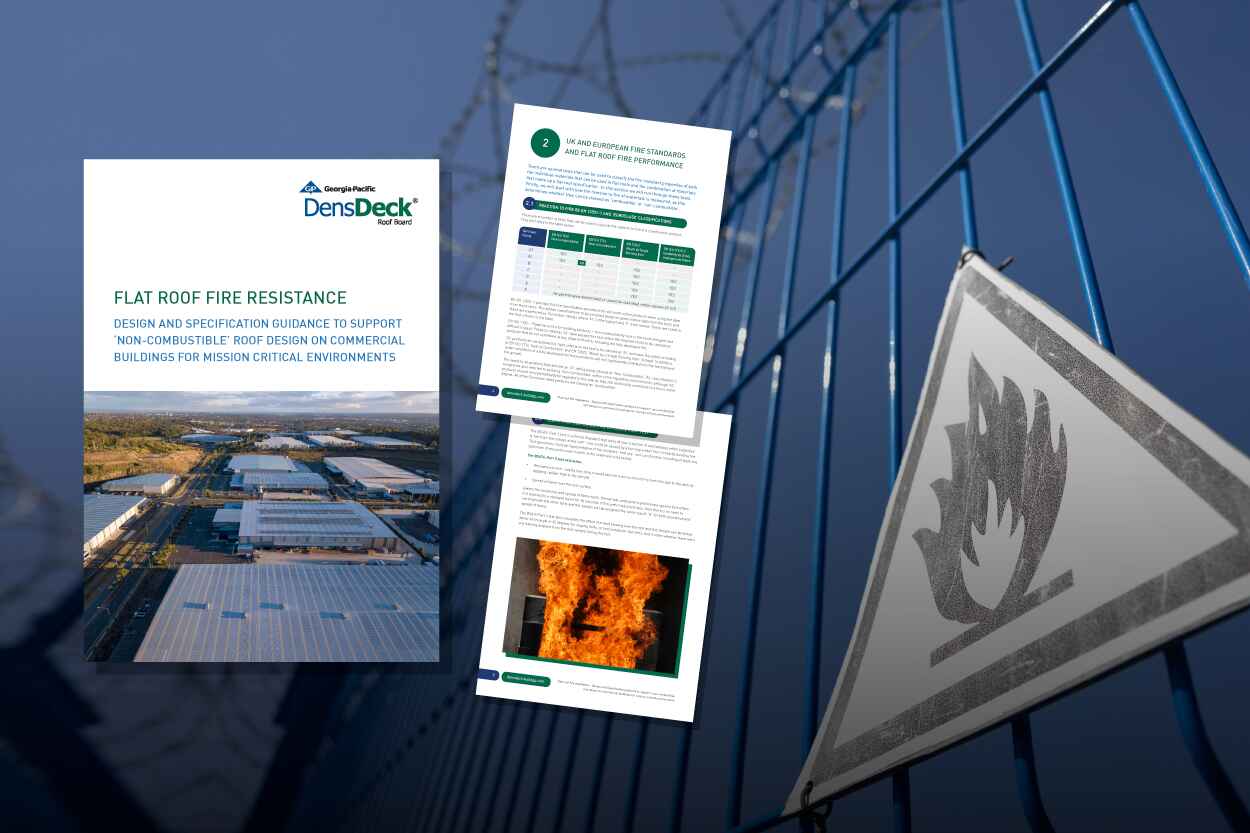How to minimise fire risk and maximise building performance using roof cover boards?

How to minimise fire risk and maximise building performance using roof cover boards?
A reduction of the risk of fire and maximising the performance of a building is an important part of its design, one area where this can be achieved is the roof of the building.
Roof cover boards are protective boards used in flat and low slope roofs. They are installed above the insulation and below the waterproofing layer and they can bring several benefits to the roof assembly. Roof cover boards are compatible with a wide variety of waterproofing layers, including single ply, and can be used with all insulation types.
Fire resistant roof cover boards and external fire spread
Where roof cover boards with a non-combustible classification are specified, they provide an additional layer of fire resistance should a fire start on the outside of the roof. The rate of fire spread may be slowed, so the damage to the roof may be reduced until the fire can be extinguished.
It is worth noting that where additional resistance from internal fire spread is required, a non-combustible classified roof cover board can also be secured over the structural deck, and beneath the insulation. In this position, we refer to the board as ‘roof board’ or ‘roof substrate board’. The board can help to shield any combustible materials within the roof assembly from heat and will help to minimise the potential for the fire to spread internally, including over a compartment wall.
Performance benefits of roof cover boards for mission critical flat roofs
There are additional benefits to using roof cover boards to maximise building performance including spreading static loads and reducing the amount of deflection of the roof surface caused by heavy loads which can reduce the stress on the waterproof membrane and the compression of the insulation. The use of cover boards can allow a wider choice of insulation where heavy static loads will be placed on the roof.
Using roof cover boards can also provide enhanced weather resistance. Cover boards add an extra layer of weight to the roof and, where they are mechanically fixed through to the structural deck, the fixings increase the overall wind uplift resistance and robustness of the roof.
The inclusion of roof cover boards can bring further additional benefits and these are discussed in detail in our White Paper ‘Flat roof fire protection design and specification, guidance to support non-combustible roof design’.
DensDeck® Roof Board is a non-combustible, glass mat faced gypsum core board. The roof cover boards can help minimise fire risk and maximise building performance. These boards are suitable for use in commercial buildings and achieve the required UK and European fire standards as well as meeting the requirements of FM approved installations. DensDeck® Roof Board is classified as A1 in accordance with EN 13501-1 and non-combustible as described and tested in accordance with ASTM E136.
To better understand how the use of roof cover boards can minimise fire risk and maximise building performance, whilst meeting the requirements of regulations, you can download our white paper, ‘Flat roof fire protection design and specification, guidance to support non-combustible roof design’, or contact one of our team today who will be happy to help.
Contact Us
Start your project or simply get specification advice by dropping us a message.
One of our team will be in touch as soon as possible.